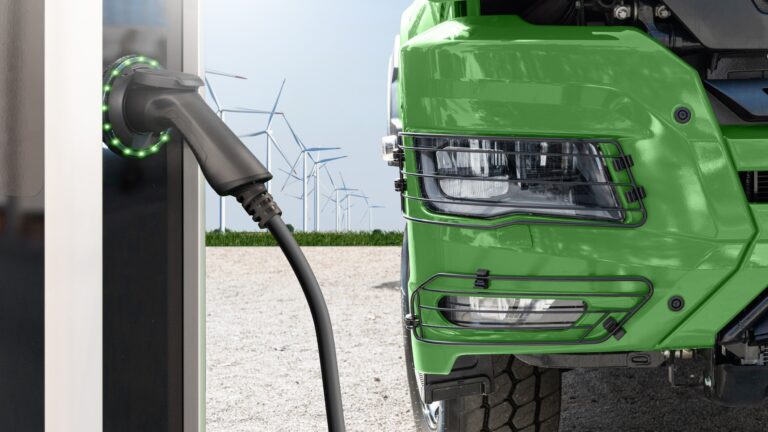
Progress is being made in road freight decarbonisation, with nearly 40% using zero tailpipe emission technology or low carbon fuels. However, with the amount of power required to electrify the UK’s road freight vehicles estimated to be 32 TWh (terawatt hours) – substantially more electricity than is used in Scotland each year – a collaborative approach will be needed to ensure future energy demand is met.
These findings are revealed in business group Logistics UK’s in-depth report Exploring Current and Future Energy Demand from Road Freight that explores the total current and future energy demand from road freight and provides initial insights on where and when energy infrastructure will be needed.
Produced on behalf of the Department for Transport’s Freight Energy Forum, the report is part of a broader project to understand how much energy is required to support the net zero transition for the whole logistics sector.
Planning is essential
Analysing petrol and diesel use, the report shows how, in 2021, UK road freight used energy equivalent to 32 TWh. Michelle Gardner, Deputy Director – Policy at Logistics UK, comments: “The calculation helps demonstrate the potential scale of future energy demand for road logistics and shows why planning and collaboration between the logistics and energy sectors is essential.”
The report shows the vast majority of transport operators envisage that the charging of HGVs (76.7%) and logistics vans (79.1%) will take place at depots or operating sites and adequate energy infrastructure at these locations will be critical. However, a comprehensive public charging network to support en route or overnight charging is still essential as, according to Logistics UK, there is an immediate need for substantial grid upgrades to address current delays to connections. Respondents identified the need for charging infrastructure in remote areas in addition to main road arteries, service stations and ports – something that the logistics sector hopes will develop faster now ports are recognised as ‘foundational’ in the Industrial Strategy and eligible for faster grid connections and reduced electricity costs.
The report findings suggest many are in the early stages of their decarbonisation journey:
- 25.9% (a quarter) of respondents have begun making changes to their operations
- 20% are “on track” to decarbonise by 2050
- 40% are using zero tailpipe emission technologies or low carbon fuels (LCFs)
Policy uncertainty is delaying progress
“There is still a lot of uncertainty over what will be the dominant technology,” Ms Gardner asserts, suggesting that, without policy clarity, companies are reluctant to invest in solutions that may be superseded.
To address this uncertainty, Logistics UK is calling for “A national logistics energy infrastructure roadmap along with greater support for low carbon fuels.
“This will help align grid, energy, and vehicle transition timelines ensuring freight is integrated into national energy planning. We are also urging that freight hubs and depot facilities are prioritised for grid connections and the government does not continue to overlook the role of LCFs, and develops a long-term, stable policy environment to support the scale-up of LCFs such as HVO and biomethane, which can provide immediate Green House Gas emission savings.”
As a result of the report, Logistics UK have made policy recommendations to deliver a more confident and coordinated transition. The full report and recommendations can be found here: https://logistics.org.uk/exploring-current-and-future-energy-demand-road-freight-report.
